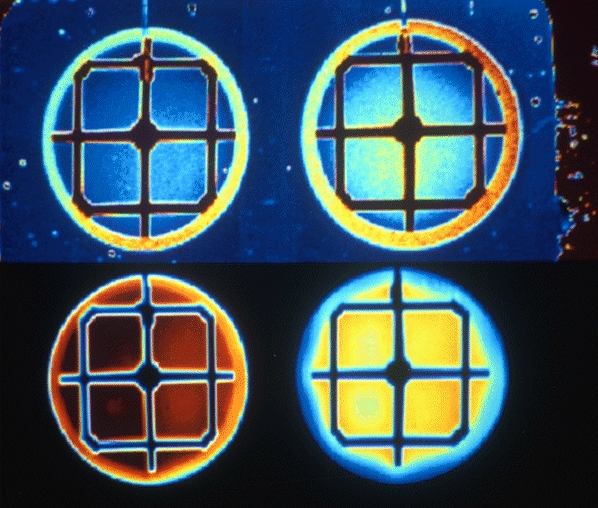 |
 |
The photograph shows two individual CdS/CuInSe2 thin film solar cells(1) imaged with a Confocal scanning beam MACROscope(2). The bottom image shows two cells imaged with reflected-light. Red, yellow and blue indicates areas of high, medium and low refle ctivity respectively. Tile top image shows the same cells (connected in parallel) imaged using optical beam induced current (OBIC) where red, yellow and blue indicate areas of high, medium and low photo-current respectively. The size of each cell is app roximately 1.5cm in diameter. Notice that the contacts (square pattern) reflect well but do not provide much photo-current. The OBIC and reflected light images are essentially the inverse of each other. Spatially resolved OBIC serves as a quality contro l and characterization method for solar cell.
(1) The MACROscope is a large area scanning beam imaging system that produces reflected-lignite, luminescence and OBIC images (512x5l2 pixels) with scan sizes ranging from 7x7cm down to 500x500 micro-meter (5 micro-meter resolution) in less than 5 seconds . This system was developed in the Confocal Microscopy Lab at the University of Waterloo (UW).
(2) The CdS/CuInSe2 thin film solar cells were produced by Henry Tiedje using evaporation and sputter techniques in the Thin Films Physics Lab located at UW.